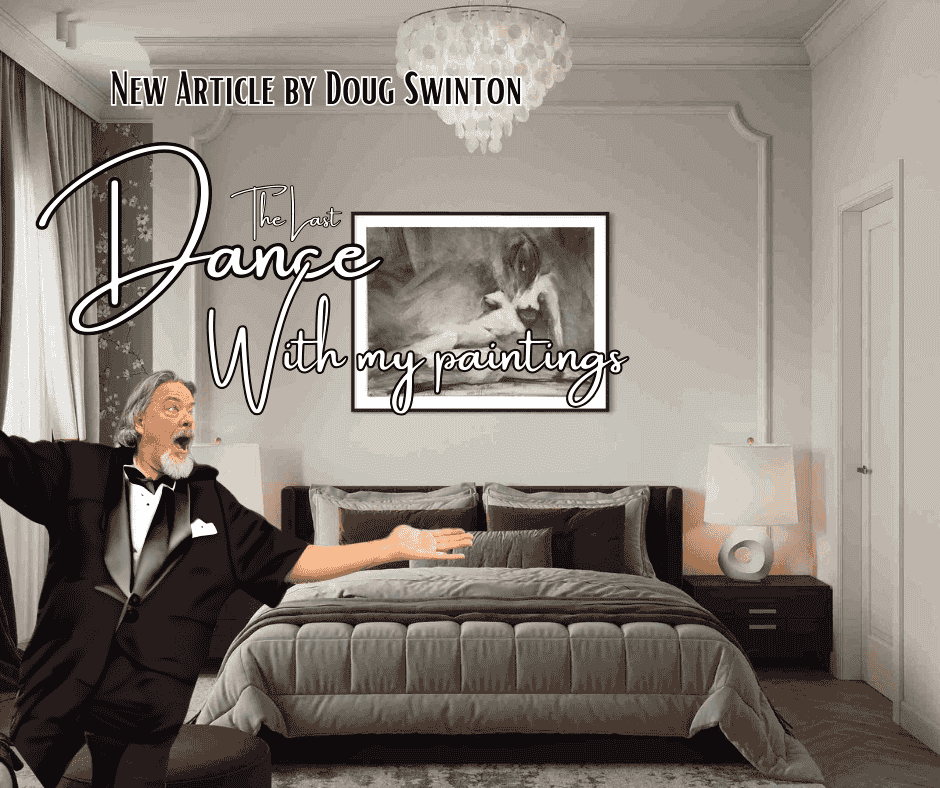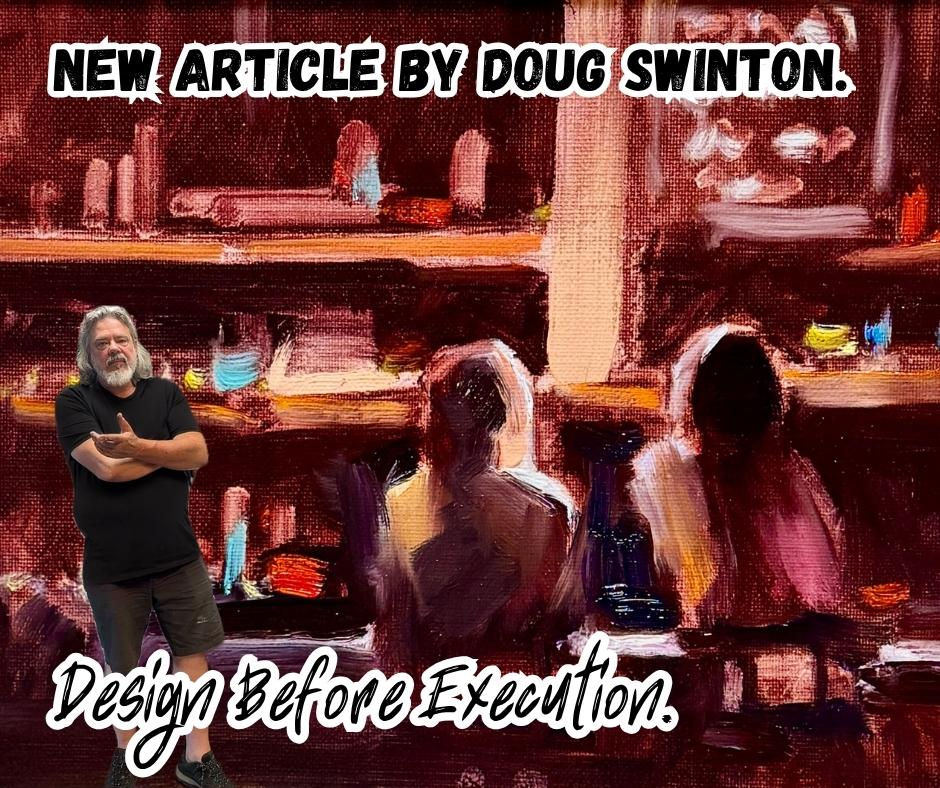10 things to consider before taking a reference photo for your painting.
- Doug Swinton

- Mar 10, 2019
- 4 min read
Updated: Mar 21, 2021
by Doug Swinton
Photography is tightly woven in the fabric of art, and it can make or break your final result. Over and over, one of my most frequent sayings has been, “bad reference photo equals bad painting”.
A while back I wrote an article about what to do with your photos before painting from them. LINK. Come to think of it, that was putting the cart before the horse.
Let’s start at the beginning and ponder a few concepts before you push that shutter button.
The better the camera, the better the photo. These days “smart” phone cameras are amazing. Even the cheap point-and-shoot cameras take decent pictures. But if you want amazing photos that you can edit properly, then you should invest in a DSLR camera. Attach a multi-focal length lens that can zoom-in and shoot wide, and your range of possibilities expands exponentially. There is a cost to this, but trust me, it pays off with the quality of reference photos you will have to paint from.
Taking digital photos is inexpensive so don’t be afraid to take lots. I cannot stress this enough. Take photos of everything and anything. I find that the photos I think are good on camera sometimes end up being disappointing on my computer, yet other photos that didn’t grab my attention at the time end up having wonderful potential upon review. Also, the more quality reference photos you have, the more you will want to paint. The more options you have, the greater the chance for finding something that strikes your creative muse. You may want to paint mountains one day, flowers the next and horses after that. So keep plenty of photos on hand.
Stormy, foggy and even overcast cloudy days can provide very interesting atmospheric reference for painting. Snap pictures in all kinds of weather. For example, photographing wet objects, like rainwater on rocks, makes the usually dull colours more vibrant. That being said, there are certain times of the day that are better for shooting. In the movie industry they call it “the golden hour”, which is the time shortly after sunrise and the time shortly before sunset. The light during this time is spectacular.
The less value there is in your reference, the more colour you need. The more value you have, the less colour you need. The less shadows or strong value changes you have (like middle of the day or overcast days) the more you can utilize different colours within that value range. Also remember that shape and pattern play a more important role when you have limited values. When using a sunset photo, it is important to use plenty of strong contrasting values, allowing you to use less colour to compose your painting.
Morning light is cool; Evening light is warm. Enhance the temperature in your photos to keep a dominant temperature in your painting. Also remember that during midday the shadows are warm and highlights are cool. Speaking of shadows and highlights... Watch where the shadows fall and keep the 70-30% rule in mind. LINK. Avoid shooting landscape or objects that have no shadows or too much shadow on sunny days.
When you are shooting snow or a white horse against a high-key field, put your camera on the bracketing setting. This will allow your camera to take three pictures in a row: over-exposed, normal and under-exposed. This will allow you to choose the one that works best without adjusting your camera settings each time or combine the images together. Another tool to use in order to get the correct exposure is Spot Metering - VIDEO
Compose your photos with the camera. Visualize your painting through the viewfinder rather than having to make corrections in a photo editor. This will save you time and get you used to finding interesting compositions. Visually framing an image with a camera comes in handy when plein air painting. Design your composition around your dominant motive or subject. Do you want a foreground motive, a middle ground motive or a background motive? If you can’t decide, remember, it’s okay to take the photo from far away (wide) and then crop it later.
Some photos will be winners without editing, others will have to be altered after the fact. A little work on a photo can go a long way to making your painting easier to paint. Cropping will become your best friend. Get used to using a simple photo editor. All computers come with a simple one and even your phone has one built in. You can get Photoshop but for painting purposes you’ll only ever use about 1% of what it can do.
Searching for pictures on the internet is a waste of time. The problem is that the majority of those photos are taken with a different purpose in mind. Photographers see things from a photography point of view and not from a painting perspective. The two are very different. So even though hours of sifting through the internet for something to paint seems easy, it takes away from your painting time and usually yields inferior results. It also says nothing about who you are and where you’ve been! Feel the air. Observe the colours. Experience the scenery first hand.
Polarizer filter is very handy when taking snow, sky and water pictures. It cuts down the glare, allowing the lake or river bottom to be more visually pleasing, enhancing the ripples lit by the sun, deepening the blue of the sky and enhancing the contrast against a snow covered mountain.
I hope these tips will help you out in the field and in your studio.
Your friend in art,
Doug.








This website is very impressive and professionally designed. The layout is clean, content is informative, and navigation feels smooth. Everything is well-organized, making it easy for users to find exactly what they need without confusion. ShayariHeart
Welcome to Ankita Verma — Jaipur’s premier escorts agency offering high-class companionship and professional services. We specialize in providing Russian escorts in Jaipur and Jaipur model escorts for clients seeking elegance, beauty, and confidentiality across the entire Jaipur area.
Aside from sex, these Russian escorts in Bangalore can also serve as your travel companions. They are familiar with the different travel attractions and hidden gems in the city. They can also provide you with a private dinner or movie date to make your experience more exciting.
Random Name Generator is a convenient online tool that instantly provides diverse name ideas for your needs. Whether you're creating novel characters, game roles like Drift Boss unblocked, or new projects, it generates unique options to keep your creativity flowing.
Welcome to Delhinight.in, Delhi’s most reliable and discreet escort service provider, designed for those who seek luxury, passion, and unforgettable companionship. We specialize in offering top-tier models and independent escorts who are not just stunning in appearance but also graceful, well-spoken, and emotionally intelligent.
Our Exclusive Services Include:|| Escort Service in Aerocity || Escort Service in Vasant Kunj || Escort Service in Dwarka || Escort Service in Mahipalpur || Escort Service in Gurgaon || Escorts Service in Chanakyapuri || Escorts Service in Connaught Place ||